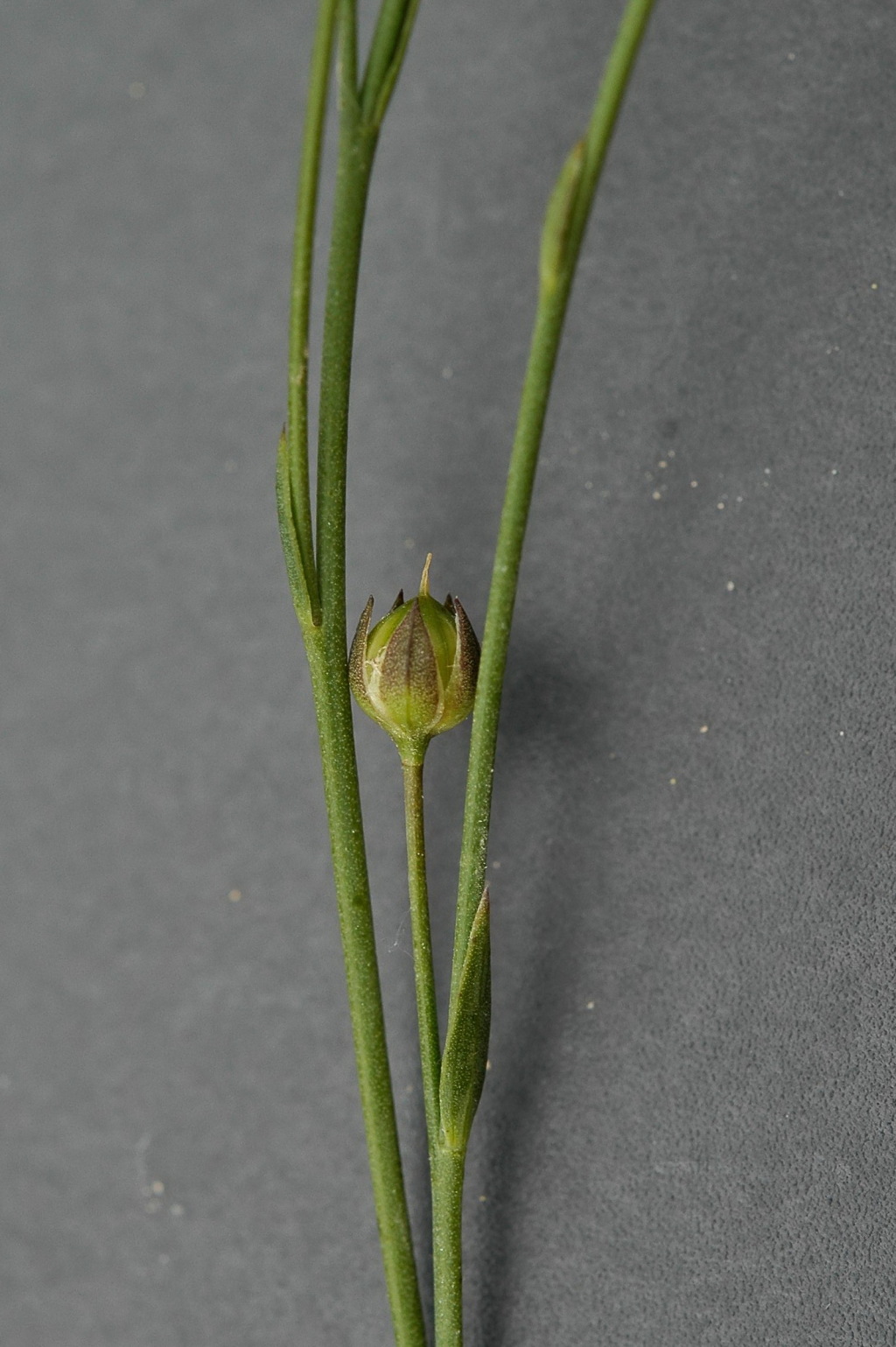Linaceae
Annual or perennial herbs, usually more or less glabrous. Leaves mostly alternate, rarely opposite, simple, entire or minutely toothed, usually sessile; stipules small or absent. Inflorescences cymose or corymbose, rarely reduced to a single flower. Flowers regular, bisexual; bracts absent; sepals and petals usually 5 each, free (in Victoria) or united at base, petals often clawed, imbricate; nectary glands sometimes present between base of petals and filaments; stamens usually 5, united at base, often alternating with 5 small staminodes, filaments expanded below and united into a short tube, anthers 2-celled, dehiscing introrsely by longitudinal slits; ovary superior with 2–5 fused carpels, 4–10-celled by development of septa, ovules 1 per cell, styles 2–5, filiform, free or partly united; stigma variable. Fruit a globose to ovoid capsule or rarely a drupe, usually splitting into 4–10 one-seeded divisions; seeds compressed, shiny, with a straight embryo and little endosperm.
About 12 genera with c. 300 species, mostly in temperate regions but cosmopolitan with a main concentration around the Mediterranean region; 3 genera (1 naturalized) with 8 species (5 naturalized) in Australia.
Jeanes, J.A. (1999). Linaceae. In: Walsh, N.G.; Entwisle, T.J., Flora of Victoria Vol. 4, Cornaceae to Asteraceae, pp. 121–124. Inkata Press, Melbourne.
 Spinning
Spinning


